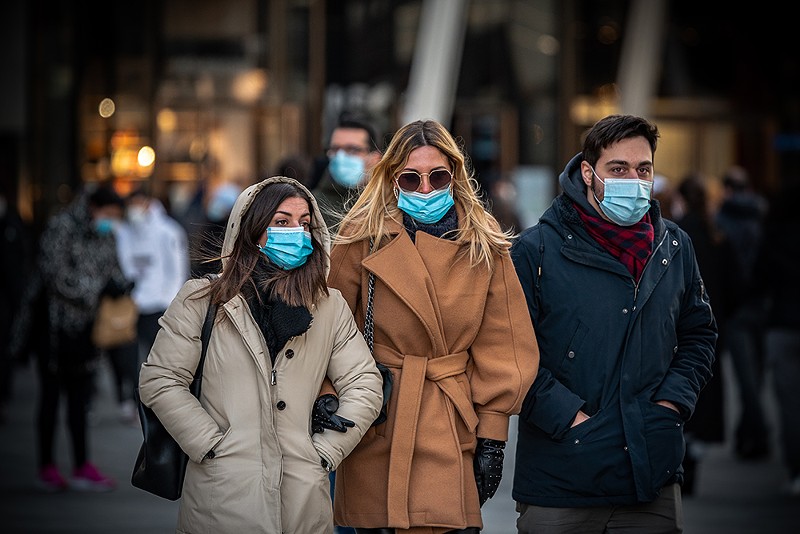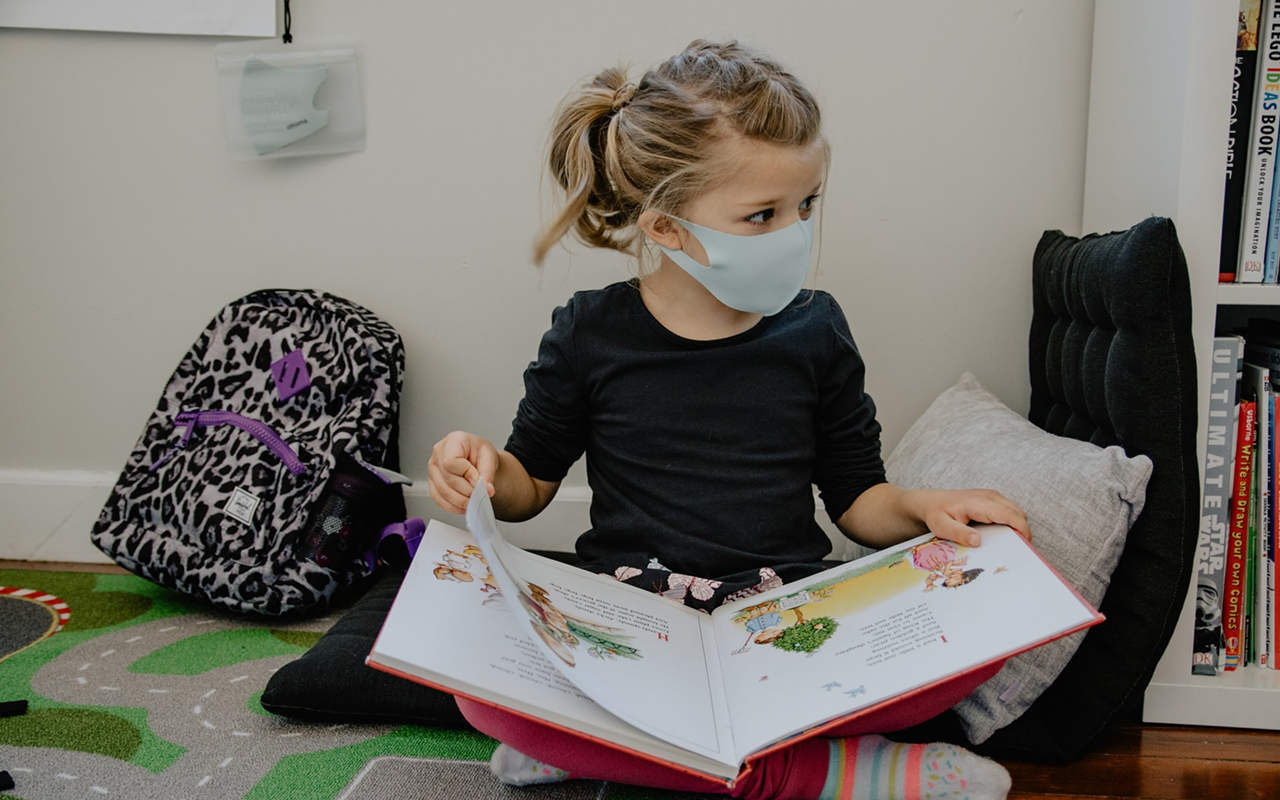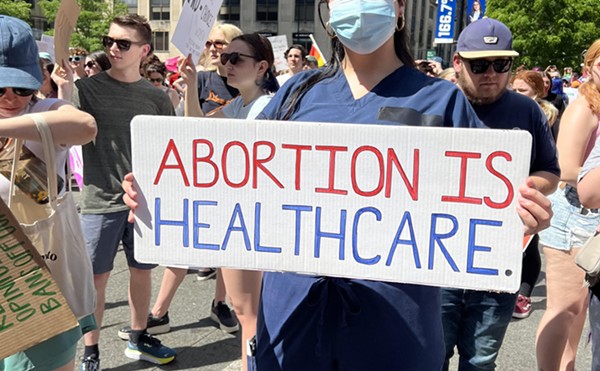Mandatory masking in Greater Cincinnati is going away bit by bit.
On April 18, a federal judge in Florida struck down a nationwide requirement for employees and passengers to wear masks on public transportation to slow the spread of the coronavirus. The mandate applied to local entities such as Cincinnati/Northern Kentucky International Airport (CVG), Amtrak, Metro, TANK and the Cincinnati streetcar.
Over the past two years, the Centers for Disease Control and Prevention (CDC) had extended its requirement for airplanes, trains, buses and other transportation — most recently until May 3 — but Judge Kathryn Kimball Mizelle has overturned the extension, saying that the decision to require masks belongs to individual airlines and other transit providers instead of to the federal government. Mizelle had been appointed by former U.S. President Donald Trump, who, like his Republican party, largely had been against mandating COVID-19 precautions.
The masking requirement originally went into place in 2020 as the nation grappled with how to deal with COVID-19, a new disease from the coronavirus. As the pandemic has worn on, the virus mutated and continued to cause major surges in COVID-19 illnesses, hospitalizations, deaths and healthcare provider burnout, so the CDC extended the requirement for travel, saying that enclosed spaces were particularly ripe for the spread of COVID-19.
Virologists and other experts agree that the coronavirus spreads through the air via fine aerosol particles that can linger for hours, which is why scientists strongly recommend wearing masks — especially when indoors or among large groups — practicing physical distancing, having good ventilation and moving airflow, and avoiding large gatherings. Scientific studies have shown that public masking — even when not everyone does so — can block a high percentage of coronavirus particles from spreading to others and can protect the wearer, as well.
Mizelle's decision will change how people will travel throughout Cincinnati, even though COVID-19 cases are rising again thanks to the Omicron variant's fast-spreading BA.2 sub-variant.
The Omicron variant became the dominant form of the still-evolving coronavirus in early December as it began spreading much more quickly than its predecessors. The variant caused a major surge in hospitalizations during the winter months as people gathered maskless indoors for the holidays. After COVID-19 cases swelled in January and February — including in the Cincinnati area — the nation saw somewhat of a decline. But Omicron's BA.2 sub-variant has since pushed case numbers higher again. According to CDC data, sub-variant BA.2 is now responsible for nearly 90% of all COVID-19 cases in the United States, The Hill reported on April 12.
CVG airport now says that masks are optional on its grounds, not required. The FAQ of the "Fly Healthy " section on the airport's website has been updated to say "As of April 18, 2022, wearing a face mask at the airport is optional. Check with your airline if you may be required to wear a mask on board aircraft." After Mizelle overturned the CDC's mask extension on April 18, most large airlines announced that they would drop the requirement on domestic flights, the New York Times reports. Some airlines, airports and destinations will continue to require masking.
Masks also are not required on Amtrak trains or its facilities, like at Cincinnati Union Terminal. The national rail provider's website has been updated with the new guidance, adding that "masks are welcome and remain an important preventive measure against COVID-19. Anyone needing or choosing to wear one is encouraged to do so."
Likewise, Metro says that masks are now optional when riding its buses or Access transportation and while waiting at its transit centers. "While no longer required, the Centers for Disease Control and Prevention (CDC) still recommend the use of facial coverings onboard transit vehicles and while waiting at transit centers, as a measure to prevent the transmission of COVID-19," Metro officials say in an April 19 press release.
TANK (Transit Authority of Northern Kentucky) also will not require passengers or employees to mask up while riding its buses, adding that it may take up to 24 hours to remove signage about the previous mask requirement. "Passengers and bus operators may continue to wear masks if they so choose," TANK posted to its social media accounts on April 19.
Masks also are no longer required when riding the Cincinnati streetcar. "Passengers are still welcome to continue to wear masks while riding, and our team will continue to provide hand sanitizer on board," streetcar officials posted on April 19.
Other entities are evaluating their own masking plans. Ride-share and meal-delivery company Uber announced that it would stop requiring its drivers and passengers to mask up. Passengers also would not be required to ride in the backseat, a policy that Uber had adopted during the pandemic to put more space between its drivers and passengers.
Scientists have said that getting one of the three COVID-19 vaccination series available in the United States (Pfizer, Moderna or Johnson & Johnson) greatly protects people from severe illness and likely hospitalization should they be exposed to the coronavirus. Adding a booster provides even more protection against serious health challenges or death, experts say. And though even vaccinated people can still contract COVID-19, they are much less likely to need hospitalization. Most hospitalized COVID-19 patients are unvaccinated, medical staff say.
Ohio is one of the least-vaccinated states in the nation, the Ohio Capital Journal reported in March.
There have been more than 987,000 COVID-19 deaths reported in the United States since the pandemic began in early 2020, according to data gathered by the New York Times. Ohio has seen more than 38,200 deaths, though experts largely agree that actual case numbers are greater than what is reported.
U.S. residents, including those in Ohio, can order free at-home COVID-19 tests through a partnership from the federal government and the United States Postal Service.
Stay connected with CityBeat. Subscribe to our newsletters, and follow us on Facebook, Instagram, Twitter, Google News, Apple News and Reddit.
Send CityBeat a news or story tip or submit a calendar event.








